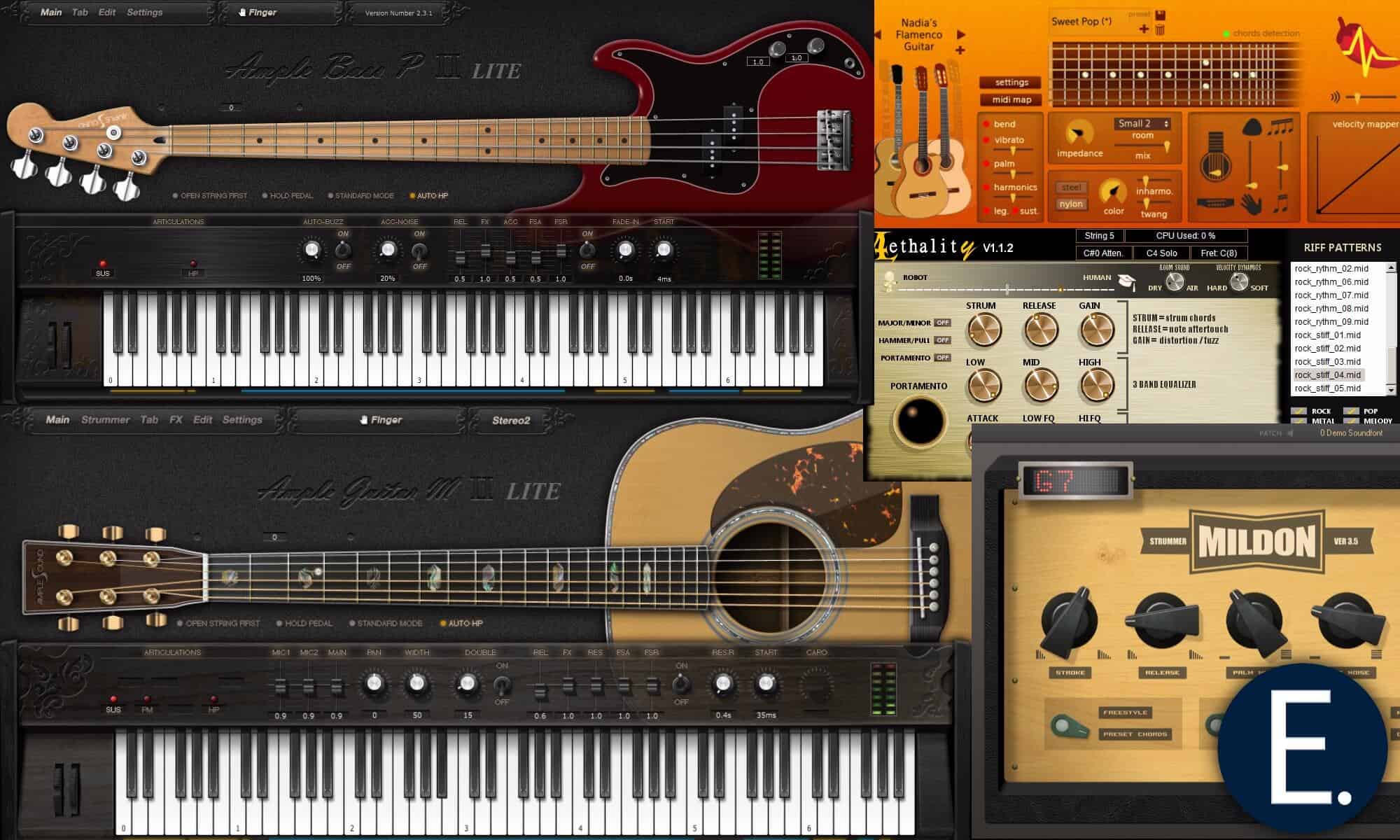Guitar harmonics, a resonant technique, produce bell-like sounds across various guitar types, including bass and concert strings.
Though commonly used by guitar players, harmonics are present in diverse music genres. Curious about guitar harmonics?
Explore their nature, mechanics, and how to play them.
This article delves into the topic, demonstrating three methods to generate harmonics on your instrument and suggesting alternatives for producers to incorporate them in a digital audio workstation.
Let’s begin.
What are guitar harmonics?
Guitar harmonics entail techniques that resonate strings above their fundamental frequency.
When performed on concert string instruments like violin or cello, these techniques are referred to as flageolet and possess a sustaining, resonant quality.
In rock and pop guitar, harmonics are widely used due to their unique response to effects such as distortion.
By employing different methods, guitar harmonics can produce a range of sounds, from bell-like overtones to piercing feedback.
How do harmonics work?
Harmonics stem from a property of stringed instruments associated with the harmonic series.
Strings create nodes, points along their length where the resulting wave’s amplitude is zero.
Nodes consistently appear at specific locations corresponding to whole number divisions of the string’s length.
Delve deeper into guitar
Explore our top resources for producers, players, and beginners.
For instance, the first node emerges at half the string’s length, the second at one-third, and the third at one-fourth.
When measuring a guitar string from the bridge to the nut, the first node appears precisely at the 12th fret, which marks its midpoint.
Measuring from bridge to nut, the 12th fret reveals the first node, precisely at half the string’s length.
By lightly touching the 12th fret bar without pressing it down, striking the string produces a resonant harmonic akin to a bell, sustaining without fretting the note.
The resulting sound is precisely one octave higher than the string’s fundamental frequency, maintaining a frequency ratio of 2:1 or, inversely, the reciprocal of half the string’s length!
Understanding the harmonic series
This phenomenon is known as harmonics due to the harmonic series.
Musical tones consist of various frequency components with differing intensities in relation to each other.
For tonal sounds like those from a guitar, the frequencies follow a predictable pattern that includes overtones occurring at whole number multiples of the fundamental frequency.
If this seems complex, fret not. It simply means that harmonics appear at 2x the fundamental, 3x the fundamental, 4x the fundamental, and so forth.
Types of guitar harmonics:
Artificial harmonics
As mentioned earlier, harmonics are created by lightly touching the string above the fret bar instead of pressing it down.
This technique is commonly known as artificial harmonics, though the term can also encompass the entire practice.
Following the harmonic series approach, these artificial harmonics occur at the 12th, 7th, 5th, and 3rd frets.
As you ascend the harmonic series, the resonance of each artificial harmonic gradually diminishes.
The octave harmonic at half the string’s length is relatively strong, while the one-fifth harmonic at the guitar’s third fret can be challenging to produce.
Nevertheless, with a well-tuned instrument, the note will resonate clearly—especially when accompanied by a cranked distortion pedal!
Pinch hormonics
Speaking of distortion, the compression and saturation from high-gain overdrive can significantly enhance the impact of harmonics.
This is particularly evident in a technique known as pinch harmonics.
By plucking the string with the pick’s flat side, allowing the thumb to mute the note immediately after striking it, players can unleash a faint octave harmonic that transforms into a wild squeal under heavy distortion.
This technique is notorious in metal genres that demand blistering guitar solos with over-the-top shredding.
Harp harmonics
The most potent and readily achievable harmonics arise at half the string’s length, as discussed earlier.
The most potent and readily achievable harmonics arise at half the string’s length
However, this doesn’t confine you to the open strings for creating them.
By fretting the guitar at any position with your left hand, you can generate an octave harmonic by lightly touching the string exactly 12 frets above with your right hand.
The technique involves holding the pick between your thumb and ring finger in your right hand while using your index finger to delicately tap the fret as you pluck.
The result is a distinct and delicate harmonic that resembles the plucked strings of a harp.
How to incorporate guitar harmonics in your music
There’s no denying the captivating allure of guitar harmonics.
But if you’re not a guitarist, you may wonder how to integrate them into your own productions.
This is where loop instruments come into play!
While the guitar has been a significant presence in nearly every popular music genre since the 1940s, it is experiencing a revival in modern genres like hip-hop, neo-soul, and R&B.
Producers in these genres have a plethora of options for guitar loops and samples, ranging from sample banks to virtual instruments and pre-made loops.
For a wide range of guitar sounds in various styles and textures, consider using LANDR Guitar, one of the top VST plugins available.
It even offers a dedicated harmonics pack with recognizable bell-like tones reminiscent of harp sounds from acoustic, electric, and distorted guitars.
Guitar harmonics:
Harmonics represent just one of the many tricks and techniques that contribute to the modern guitar’s distinctive and memorable sound.
Whether it’s the haunting resonance of artificial harmonics or the wild squeal of pinch harmonics, you can harness their sonic qualities regardless of whether you play the guitar or not.
If you’ve made it through this article, you’re off to a great start when it comes to understanding guitar harmonics.

